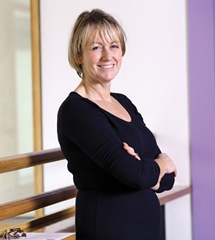 Northern Ireland’s infrastructure is “at a tipping point”, according to the Institution of Civil Engineers’ state of the nation briefing. agendaNi talks to Regional Director Wendy Blundell about its findings.
Northern Ireland’s infrastructure is “at a tipping point”, according to the Institution of Civil Engineers’ state of the nation briefing. agendaNi talks to Regional Director Wendy Blundell about its findings.
Each year, the Institution of Civil Engineers (ICE) produces state of the nation overviews of infrastructure at UK and devolved nation levels. For 2010, the institution finds that the UK is “at a cross roads” as productivity growth has been held back by under-investment in infrastructure.
Indeed, Northern Ireland is at a similar “tipping point”, the marked exception being the good condition of local ports and harbours. Warrenpoint Harbour’s redevelopment is especially noted.
“We discovered that most of our infrastructure sits around a category of C, and that requires attention,” she comments.
Assessments are made on the following scale:
A Fit for the future
B Adequate for now
C Requires attention
D At risk E Unfit for purpose
Each local sector scored as follows:
B Transport
C Energy
C Flood risk management
C Water and waste water
C Waste
“The only area that we’ve made great improvement on was in transport and I think we can all see the evidence of that,” Blundell remarks, pointing to the roads investment. The key transport corridors were the main success stories but more investment was needed in the secondary road network and local public transport.
Accelerated progress on a multi-level free flow interchange at the Yorkgate junction is a key priority in the report. It serves three major corridors (the M2-M5, the Westlink and the M3-Sydenham bypass) and the ICE understands that it has the only set of traffic lights between Larne and Dublin.
Improved frequencies on Belfast’s Metro corridors have increased passenger numbers by 30 per cent over five years but trains have a “long way to go to get that up to speed”. Blundell welcomes the refurbishment of Newry bus station but also highlights a need for new train sets, from the Spanish manufacturer CAF, and investment in the Coleraine to Derry line.
Ultimately, the ICE would like to see a higher speed rail link between Belfast and Dublin. While the Enterprise is good, she adds: “If you look at a European model, 100 miles in two hours is not the best.”
According to its assessment, new infrastructure is needed as the existing track is not fit for purpose. A one-hour journey is possible, it states.
“Getting people out of their cars must be a priority,” Blundell says. “We absolutely love our cars so the idea is obviously to try to move to a low carbon economy and transport’s got a big part to play in that.” Northern Ireland is “starting from quite a low base” in that area.
The report was compiled by a panel of experts, both ICE members and also sector representatives from organisations such as NIE, the Belfast Harbour Commissioners and arc21.
Going forward, she expects the Executive to face many demands but her key message is: “Good infrastructure is essential for good economic growth for Northern Ireland.”
The spending review, in her view, reinforced that message with George Osborne increasing the UK Government’s capital spending by £2 billion per year, compared to the June Budget. The ICE also welcomes his emphasis on the low carbon economy e.g. through the proposed green investment bank.
“The model was set in Westminster. We want to make sure that that message comes across to Northern Ireland,” she suggests. However, the Executive’s capital budget has been cut by 37 per cent, on Treasury figures.
Civil engineers can do more for less, she contends. High construction prices remain a problem with the UK ranked fifth highest of the 27 EU member states: “There’s room for improvement there and our industry’s got to take some ownership of that.”
The 2010 briefing is available at www.ice.org.uk/nearyou/UK- Regions/Northern-Ireland





